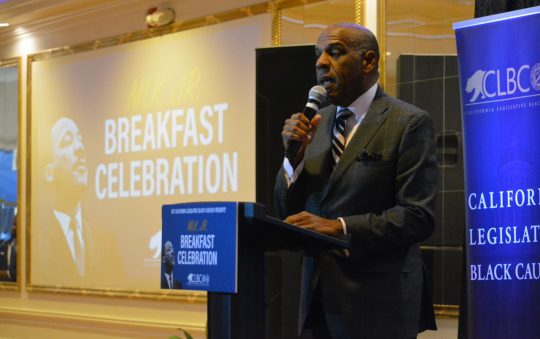
Assemblymember Reggie Jones-Sawyer’s AB 413 addresses the stigma associated with the label “at-risk” by changing references of “at-risk youth” to “at-promise youth” in the Penal and Education Code.
“Words do matter stated Jones-Sawyer. Our youth should be viewed in terms of their potential and not permanently condemned for mistakes made as a child.”
There is a movement amongst educators and community leaders to stop referring to youth as “at-risk.”
Society uses “at-risk” to describe students living in precarious situations that increase their chances of failure in academics, drug use, and involvement with gangs or the criminal justice system. For decades, this term has been reserved for those from disadvantaged backgrounds, which include single-parent households, low-income communities, English learners, and children in foster care.
Combating stigma with the use of intentional language has been similarly addressed in the people with disabilities community. There is a shared understanding that the words we use to describe people can adversely affect the way we treat them, even if it is with the best of intentions.
People-first language helps individuals feel respected and seen beyond their situation.
Various researchers, including sociologists and early childhood educators, argue that the use of negative labels can lead to stigmas and expectations to fail.
This results in a fixation on that failure and perpetuates a cycle of self-doubt and problematic behaviors.
Furthermore, implicit bias enforced by the term “at-risk” can influence the way these students are treated and potentially diminish the resources available to them.
As opposed to “at-risk,” “at-promise” promotes a more positive approach and has the chance to changethe outcomes for our most vulnerable youth. It encourages individuals interacting with students to empower them and treat them as people with the promise to succeed.
The term “at-risk” comes from a mindset of deficit and focuses on what children lack to succeed. It is time we break down those barriers and transition to“at-promise” to better foster growth and emphasize every child’s immense possibilities.
AB 413 amends the Penal and Education Code to replace the terms “at-risk youth” and “high-risk youth,” with “at-promise youth” and “high-promise youth.”
Support for this bill came from the Los Angeles County Office of Education (co-sponsor), SIATech (co-sponsor), Office of the Riverside County Superintendent of Schools and University of California Student Association.







